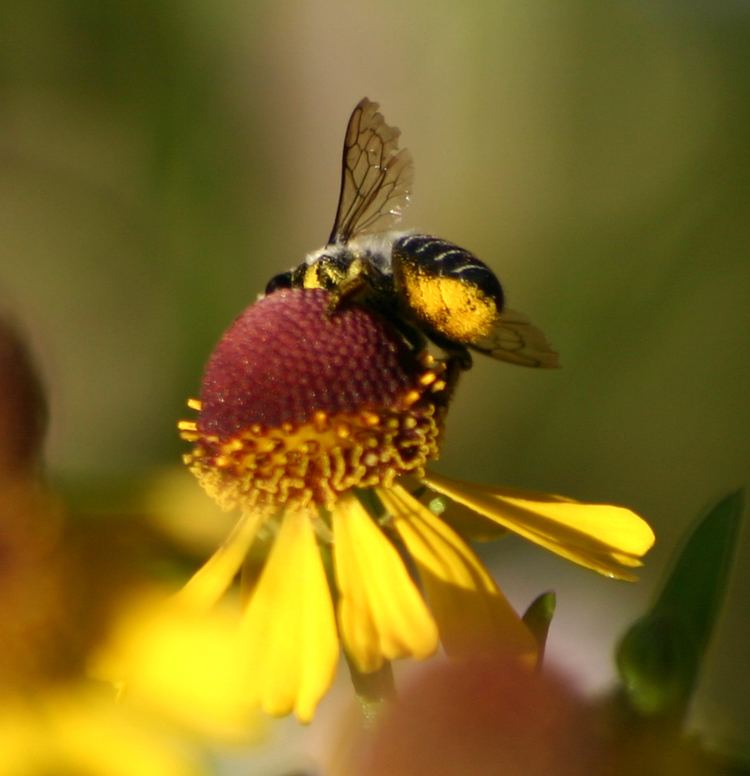 | ||
Scopa (plural scopae; Latin for "broom") are any of a number of different modifications on the body of a non-parasitic bee that form a pollen-carrying apparatus. In most bees, the scopa is simply a particularly dense mass of elongated, often branched, hairs (or setae) on the hind leg. When present on the hind legs, the modified hairs are, at a minimum, on the tibia, but some bees also have modified hairs on the femur and/or trochanter. A few bees have, in addition to the leg hairs, many modified hairs on the ventral surface of the abdomen which are also used in pollen transport; there is one family of bees, Megachilidae, in which the modified leg hairs are absent, and the scopa is limited to the abdominal hairs (see photo). In the familiar honey bees and bumblebees, the scopa is replaced by the pollen basket (corbicula).
There are other various types of modified hairs on bees that are used to remove pollen, floral oils, or other chemicals from plants, and these can be on the face, mouthparts, or the front or middle legs, but these are not classified as a scopa; the term is explicitly restricted to hairs used to transport pollen. There are some bees which transport pollen internally in the crop, and these lack a scopa, as do cleptoparasitic bees, which do not gather their own pollen.
